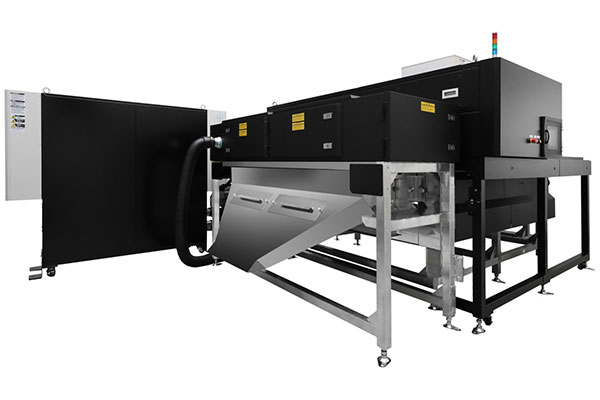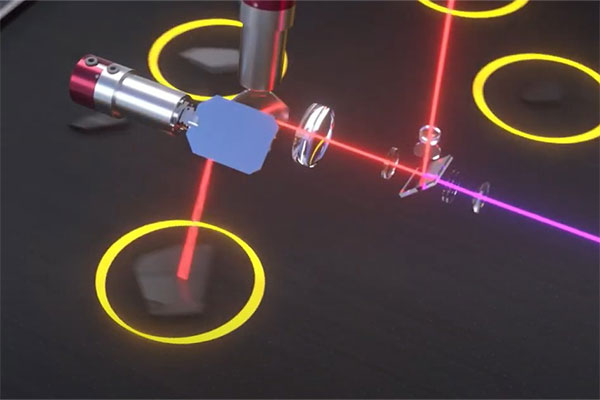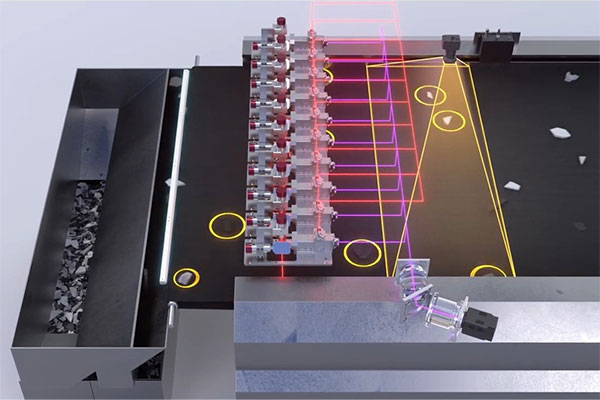News Release
June 6, 2024
Canon Inc.
Canon enters recycling system business with innovative technology, promoting circular economy with high-speed, accurate plastic sorting equipment capable of measuring even black plastic waste
TOKYO, June 6, 2024—Canon Inc. announced today that it will launch new plastic sorting equipment with innovative material identification technology. The equipment applies Raman spectroscopy technology to moving objects with a tracking mechanism to collectively detect the material types of plastic fragments with high accuracy, even when black plastic pieces are mixed with other colors, which has been conventionally challenging. Today, the company will begin widely accepting orders from the market for the "TR Series" which includes the "TR-S1510."



Currently, roughly 20%1 of plastic waste generated in our daily lives is recycled as material for new products (material recycling), while the remainder is used as fuel or incinerated. Recycled plastics have to maintain a certain degree of purity, which is why materials made of plastic waste, such as ABS2 and polypropylene (PP), must be accurately identified. However, black plastics, often used in home electronics or automobile upholstery, do not transmit or reflect visible light, making it difficult to identify their materials using conventional near-infrared spectroscopy3. Additionally, in order to accelerate plastic recycling, higher accuracy and productivity are required for sorting operations. The new product employs a proprietary tracking Raman spectroscopic method to rapidly sort all plastic pieces regardless of their colors, including black, with high precision, thereby helping to improve the productivity of recycling plants. With the launch of this product, Canon marks its entry into the recycling system market in an aim to build a circular economy by maximizing material recycling.
The new product's high-precision, high-speed sorting of plastic including black pieces is thanks to its unique combination of Raman spectroscopy with a tracking mechanism. Raman spectroscopy is a detection method that utilizes laser light to illuminate plastic pieces to obtain molecular information of the substance, thereby enabling the material detection. This method is technically applicable to black plastic. However, due to the limited amount of reflection by the black plastic pieces, the measurement time is too long relative to the speed and throughput required to effectively sort all the pieces regardless of their colors at recycling plants. Therefore, the practical application of Raman spectroscopy to sorting black plastic has so far proven difficult. By combining Raman spectroscopy with Canon's measurement and control equipment, the company has developed a tracking Raman spectroscopy technology which scans4 laser light toward the pieces, thus ensuring there is enough measurement time required for each piece of plastic according to its color and achieving high speed and high accuracy overall. With this new system, the materials of black plastic pieces which were challenging to identify using the conventional near-infrared method can now be identified in a practical manner even when mixed with other colors, thereby helping to improve the productivity of recycling plants and, as the result, maximizing material recycling.
This new product maintains a conveyor speed of 1.5 meters per second and can sort up to 1 ton of plastic per hour. It can even be customized according to a customer’s throughput and installation space by changing the module which tracks and measures the plastic pieces or the combination of conveyor belts.
- 1
According to “Plastic Products, Plastic Waste and Resource Recovery” published by the Plastic Waste Management Institute
- 2
Acrylonitrile Butadiene Styrene. A type of plastic that is highly resistant to heat and impact.
- 3
A method of measurement in which an object is illuminated with near-infrared light. Based on such factors as reflection and penetration of light, the object’s light absorption is measured and the type of resin the object comprises can be determined
- 4
By continuously moving the position of the laser, the target object is continuously illuminated by the laser, allowing for light to be reflected
